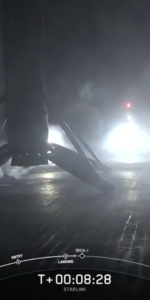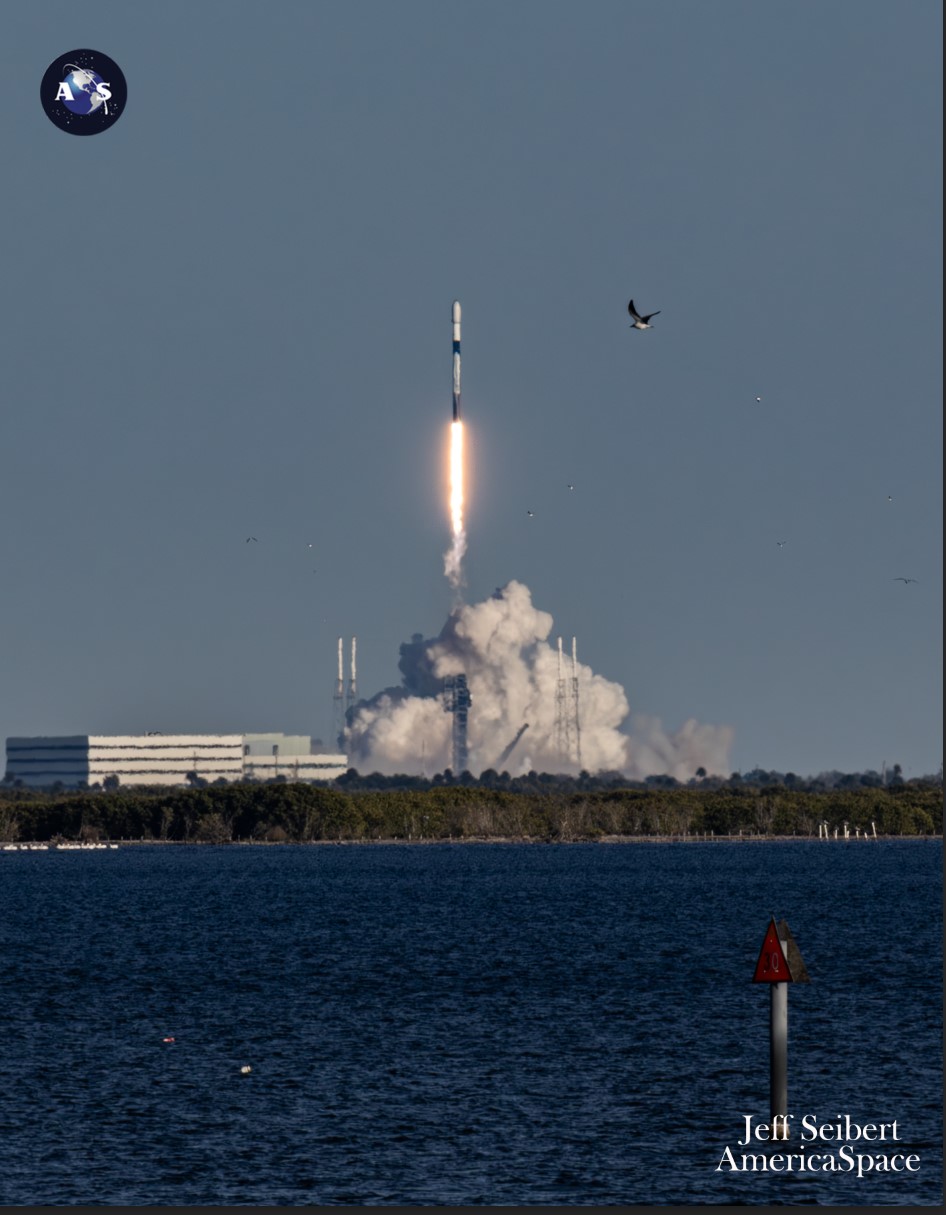
Thirteen may be unlucky for some—and SpaceX’s B1069 booster has had more cruel luck than most—but Sunday’s launch of the 13-times-used Falcon 9 core proceeded smoothly and without incident, following a day of delay. The veteran booster sprang from neighboring Space Launch Complex (SLC)-40 at Florida’s Cape Canaveral Space Force Station at 5:06 p.m. EST, a half-hour into Sunday’s four-hour “launch window” and delivered 24 Starlink “V2” Mini internet communications satellites into low-Earth orbit.
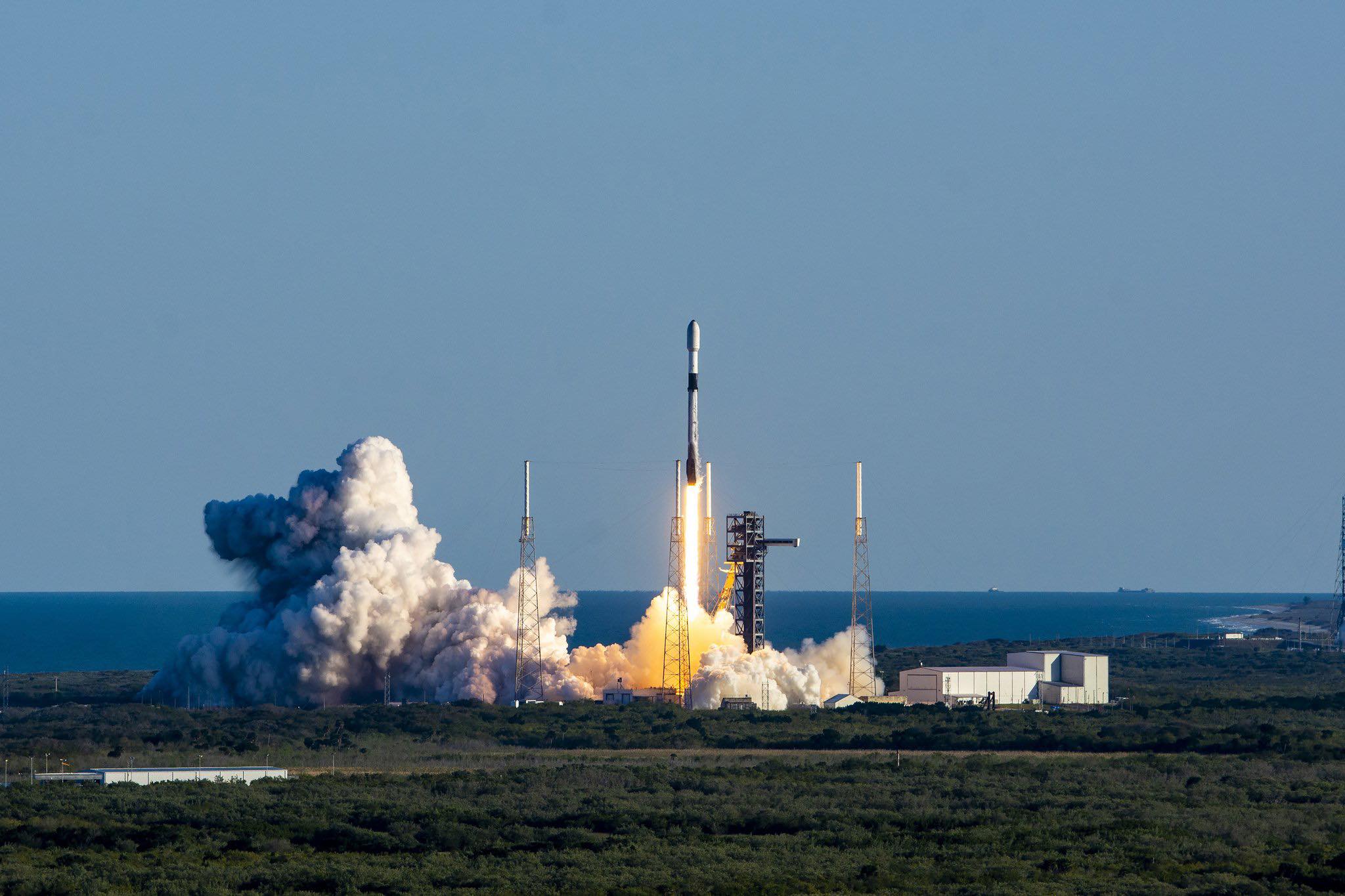
First flown in February of last year, the V2 Minis boast three to four times greater “usable” bandwidth than earlier Starlink iterations. “V2 Minis include key technologies—such as more powerful phased-array antennas and the use of E-Band for backhaul—which will allow Starlink to provide 4x more capacity per satellite than earlier iterations,” SpaceX explained. “Among other enhancements, V2 Minis are equipped with new argon Hall thrusters for on-orbit maneuvering.”
Including last night’s launch, 54 batches of V2 Minis—almost 1,200 of these flat-packed satellites in total—have risen to space over the last dozen months, typically in groups of between 15 and 23 birds per mission, each payload tipping the scales at between 26,000 pounds (12,000 kilograms) and 40,600 pounds (18,400 kilograms). But for the first time last night, a super-sized V2 Mini stack of 24 satellites, possibly totaling around 42,400 pounds (19,230 kilograms) was lifted uphill, making it the heaviest announced payload ever launched by a “single-stick” Falcon 9.
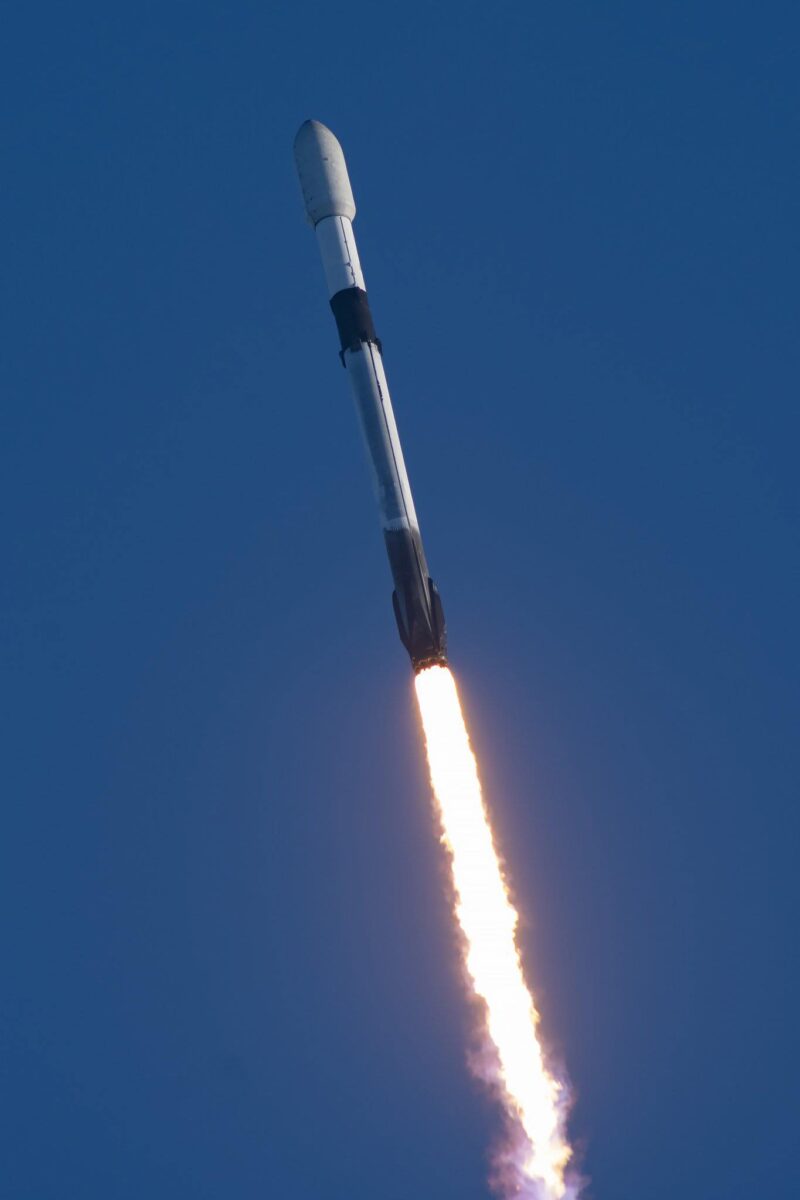
With this most recent mission almost 5,900 Starlinks have flown over 140 Falcon 9 missions since May 2019. Deployment of the stack occurred a little past 62 minutes after last night’s liftoff.
As a network, Starlink enables high-speed and low-latency internet provision to over 70 sovereign nations and international markets in North and South America, Europe, Asia, Oceania and Africa. Landlocked Eswatini—formerly Swaziland—in southern Africa and Honduras and Paraguay joined Starlink in December.
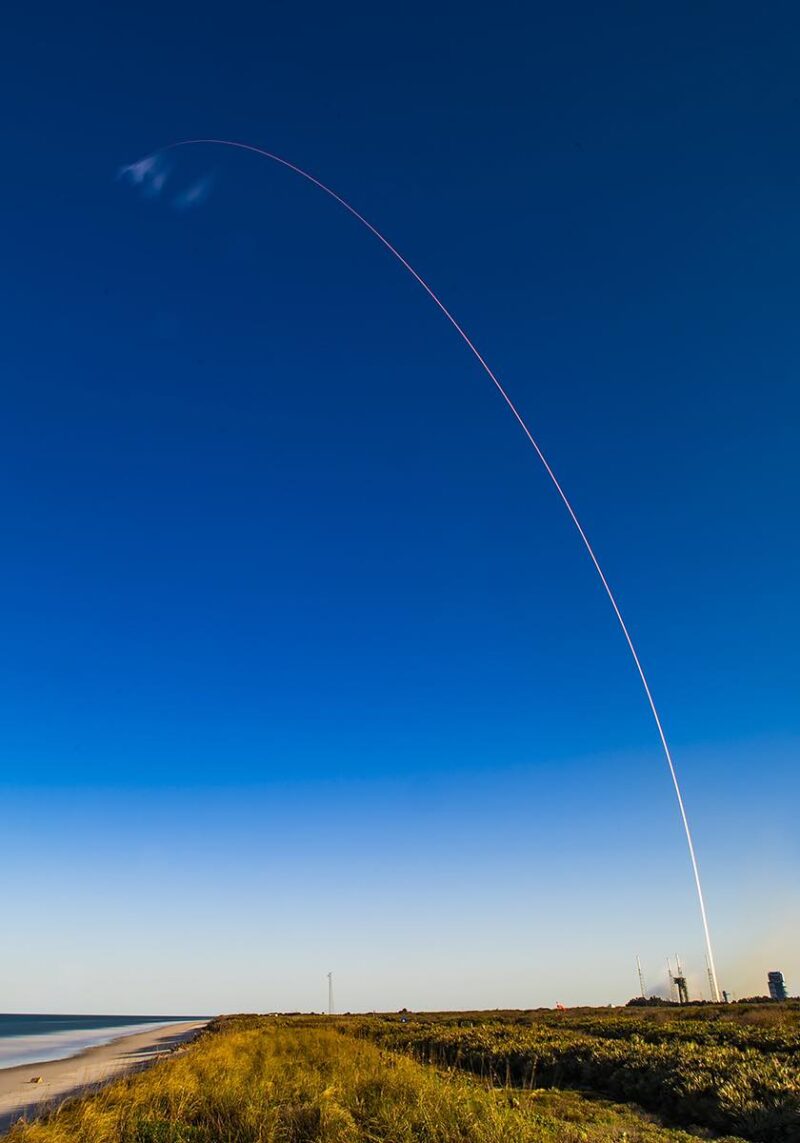
Florida-based intercity operator Brightline adopted Starlink on its trains in 2023, the first passenger rail service in the world to do so. Additionally, El Salvador’s Ministry of Education has begun integrating Starlink capability into its schools to help close the digital divide between urban and remote rural communities and 50 Rwandan schools are now connected via Starlink’s high-speed internet service.
And last month, SpaceX lofted its first six “Direct-to-Cell” Starlinks, which permit mobile network providers to offer “seamless global access to texting, calling and browsing”, whether “on land, lakes or coastal waters”, without changing hardware or firmware. Within six days of that first launch, SpaceX engineers sent and received their first text messages via Direct-to-Cell. Counting last night’s flight, ten Starlink-laden Falcon 9s have flown so far in 2024, delivering over 220 satellites into orbit.
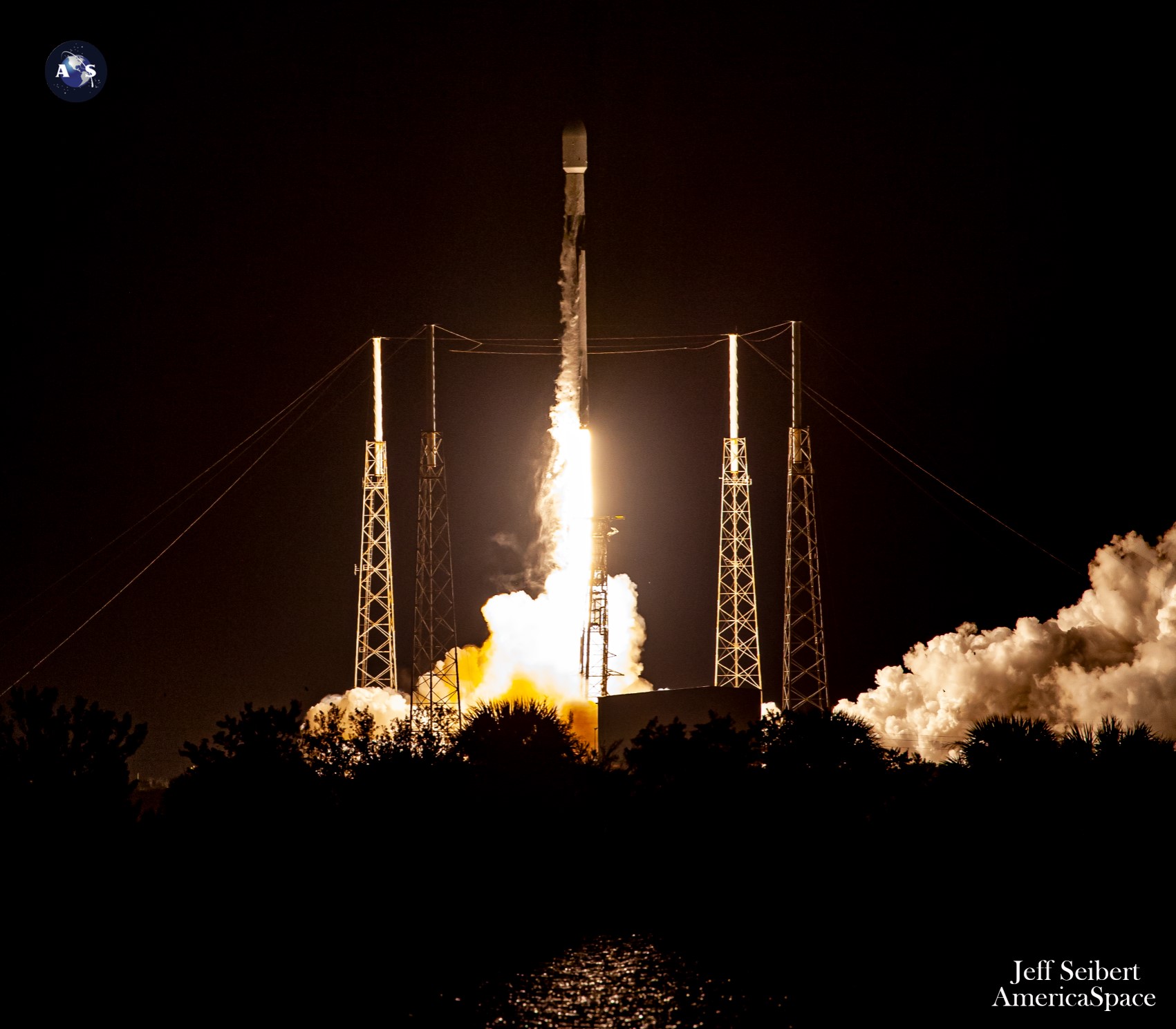
Originally targeted to fly on Saturday night, B1069’s 13th trek to space was routinely postponed by 24 hours as teams aimed instead for a four-hour “window” of T-0 points extending from 4:34 p.m. EST through 8:34 p.m. EST Sunday. Weather conditions for the end of the weekend, per the 45th Weather Squadron at Patrick Space Force Base, were projected to be around 95-percent-favorable, tempered by a slight chance of violating the Cumulus Cloud Rule.
“Winds were primarily onshore this afternoon, due to the sea breeze, so expect light and variable conditions to continue through the evening,” the 45th noted in a meteorological update on Saturday evening update. “High pressure builds over the peninsula tomorrow, with winds shifting north to northeasterly.
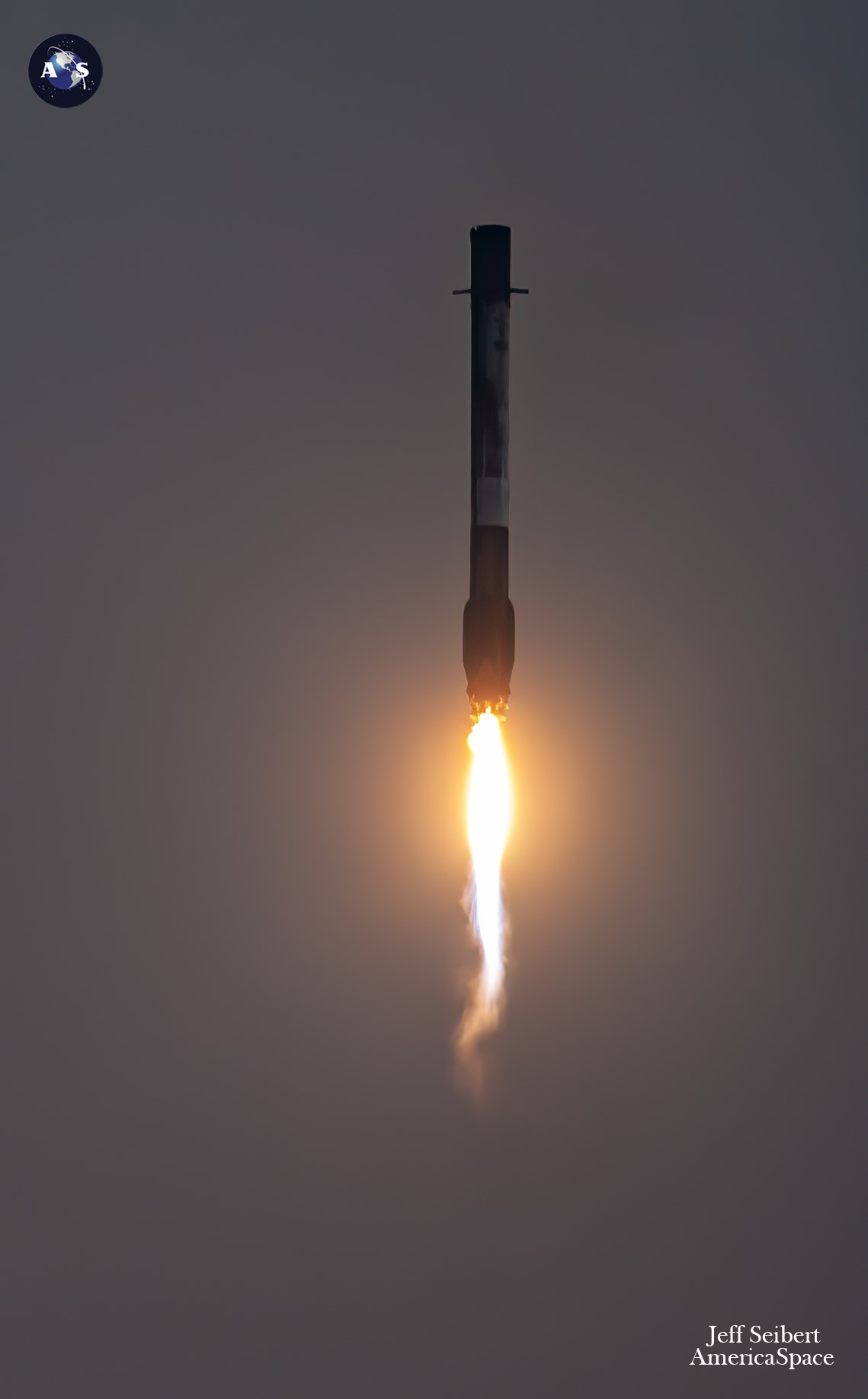
“A very weak gradient should result in the setup of a weak sea breeze once again by the opening of the launch window,” it added. “There is very little concern for violation, other than a stray cumulus cloud that could move off the coastal waters.”
In readiness for launch, the Autonomous Spaceport Drone Ship (ASDS), “A Shortfall of Gravitas”, departed Port Canaveral last week, bound for a recovery position some 400 miles (640 kilometers) offshore, in the Atlantic Ocean. This newest member of SpaceX’s drone-ship fleet entered service back in August 2021 and has so far retrieved booster cores from 59 returning Falcon 9 missions, including four this year alone.
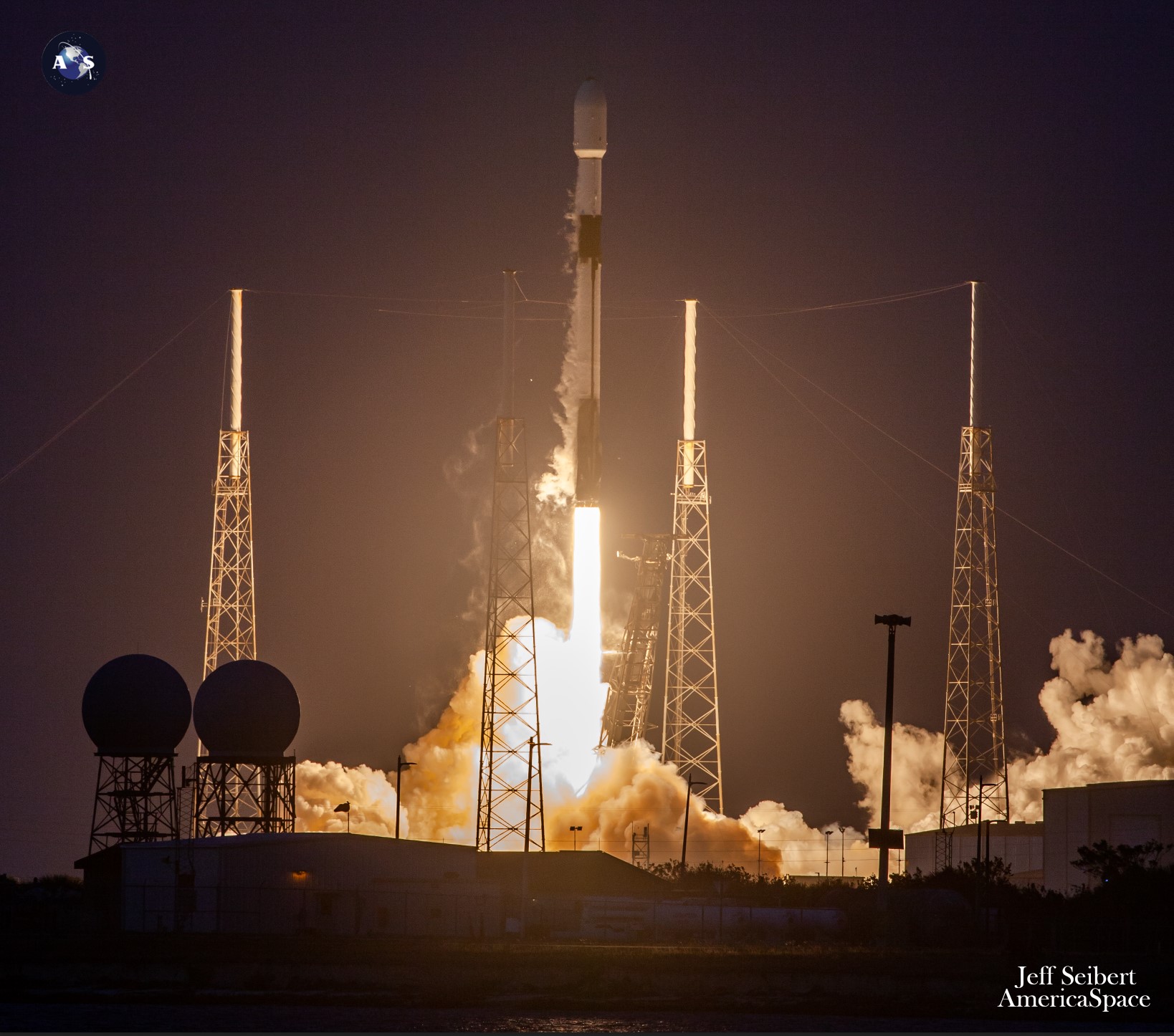
For B1069, reaching 13 launches—making it the ninth booster to do so—is an impressive figure it came close to never seeing at all. She entered SpaceX’s fleet in December 2021, delivering the research-laden CRS-24 Cargo Dragon on the first leg of its month-long stay at the ISS. But she was almost lost seconds after touchdown, when she came within a hair’s breadth of missing the deck of the drone ship and toppling into the ocean.
The incident necessitated substantial repairs—including a brand-new suite of Merlin 1D+ first-stage engines—before B1069 re-entered service to log three missions in the second half of 2022: emplacing 54 Starlinks to orbit in August of that year, Eutelsat’s Hotbird 13F geostationary communications satellite the following October and 40 broadband satellites in December for London, England-based OneWeb.
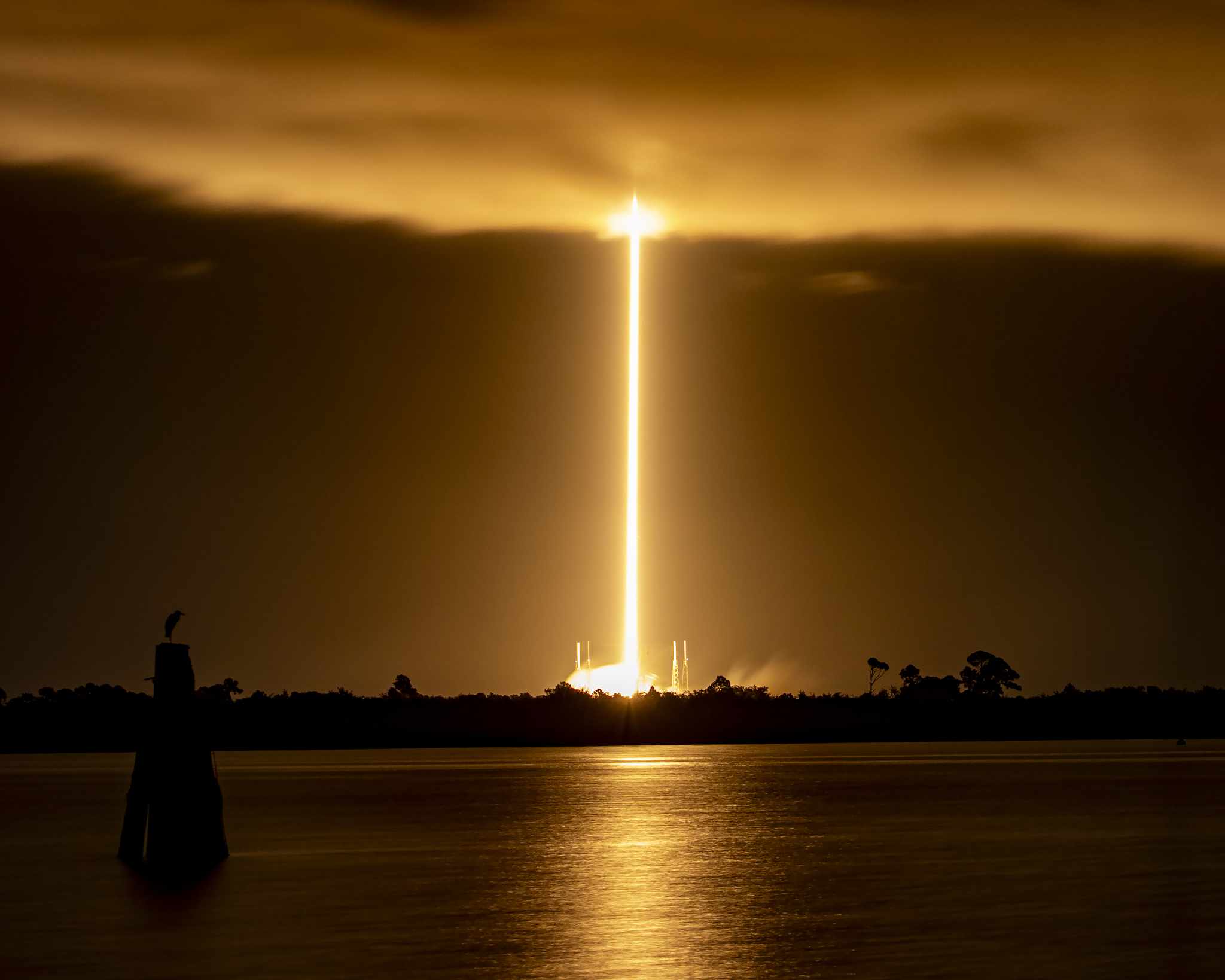
Eight more flights followed for B1069 last year, including seven Starlink batches and the dual-stacked SES-18 and SES-19 geostationary communications satellites for Luxembourg-based provider SES. Two of her 2023 missions set new records in March and December for the shortest interval between pairs of SpaceX launches.
Last night’s liftoff occurred about a half-hour into the window at 5:06 p.m. EST and B1069 powered the Falcon 9 uphill for the opening 2.5 minutes of ascent, before returning to a smooth landing on the deck of ASOG. Meanwhile, the second stage executed a customary six-minute “burn” of its single Merlin 1D+ Vacuum engine to deliver the 24 Starlinks into orbit, with deployment clocked at 64 minutes and 48 seconds into the mission.
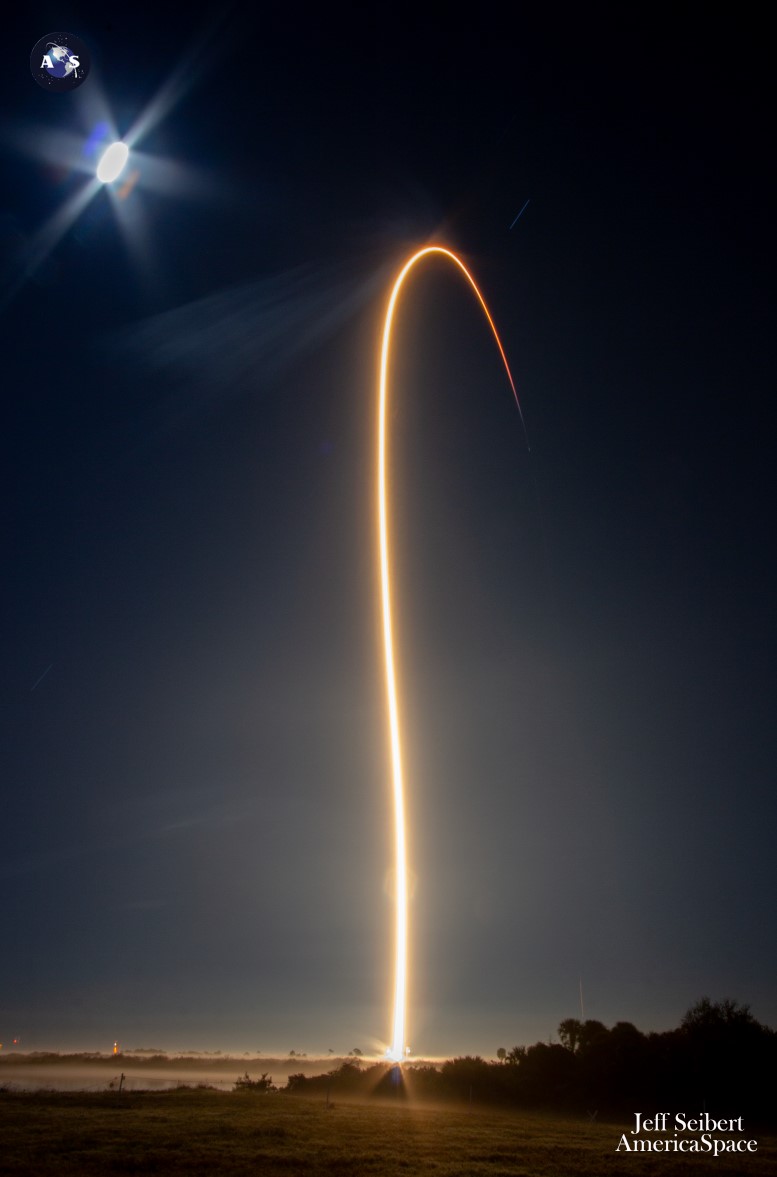
With B1069’s latest mission, SpaceX is drawing into February’s final days with eight launches achieved so far this month. Four of those flights have been dedicated to Starlink, together with the launches of a NASA-led ocean/climate-monitoring mission, an Indonesian geostationary communications satellite, a highly classified group of payloads for the U.S. Space Force, Missile Defense Agency (MDA) and Space Development Agency (SDA) and Intuitive Machines’ high-profile IM-1 voyage to the Moon’s South Pole under the Commercial Lunar Payload Services (CLPS) contract.




